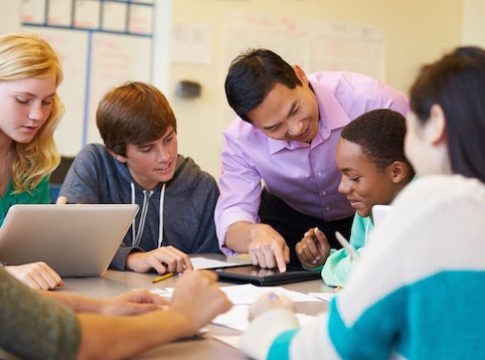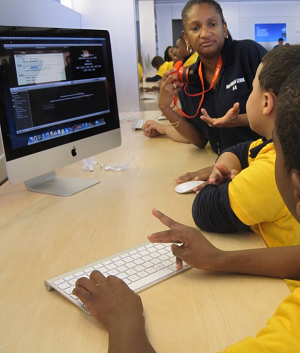Out in sunny Utah, around 7 percent of the students are now going to charter schools, creating financial conflicts of interest between district and charter schools, as both sides are trying to persuade the state legislature that they need more of the dwindling pot of state dollars.
Into this mix has walked the Open High School of Utah, a charter school that is offering a virtual education that is based almost entirely on curricular materials available free-of-cost from open sources.
The school has only 125 ninth graders this year, but its founders plan to grow in size and grade levels year by year, as they steadily create the curriculum for each year of study. Already, they have learned how to adapt their curriculum to the needs of each student, an approach that will be enhanced once the full four-year curriculum is available. Already, teachers have become coaches: their main job is providing tutorial assistance to those encountering difficulties with the pre-packaged course material.
Open High receives around $5,000 per student from the state, the same as any other charter school (and considerably less than the nearly $8,000-per-pupil that district schools receive). With 5 teachers for 125 students, that amount is most certainly needed at present, given the upfront costs of identifying and deploying open source material while providing the requisite tutoring.
All this I learned recently in a fascinating conversation with the informative chair of Open High’s board, Robyn Bagley. Is this the school that will someday provide the kind of virtual schooling I envision in Saving Schools: From Horace Mann to Virtual Learning?
So far, virtual education at Utah’s Open High strikes me as roughly analogous to the pocket transistor radios Sony made back in the 1950s whey they began competing with vacuum-tube consoles in the living room, an analogy Clay Christensen and Michael Horn like to make. Open High has the potential to fundamentally disrupt the status quo, but its technological capacity has yet to arrive.
Whether Open High will become the future high school Sony depends a lot on the rules of the game in Utah. Currently, the conditions for transformation are not in place. The school cannot grow beyond 1,500 students, despite the fact that there is no logical limit to its size. Students cannot take a mix of courses at Open High and a brick-and-mortar school. Instead, students must take all—or none–of their courses from Open High. State law insists that districts must let virtual students participate in basketball, band, and other extra-curricular activities, but getting this to happen on the ground is quite another matter.
Still, Open High of Utah is a place to watch. Under the guidance of open source guru David Wiley at Brigham Young University, the school is committed to constantly upgrading its curriculum so as take advantage of the technological advances coming on line. Open High might get better even faster if it sacrifices some of its current commitment to open source by simply searching for the best curriculum anywhere. Already, the school pays for their AP courses. I see no reason why other courses might not benefit from accessing a mix of open source and licensed materials. Open source is a great idea, but one needs to remain open to the idea that it does not always produce the very best.




